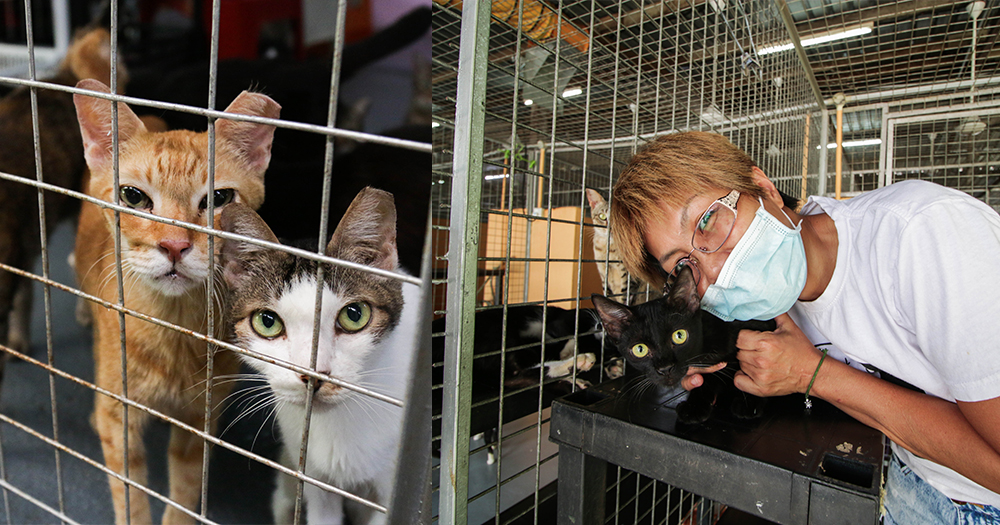Portrait Mode is a new photo essay series of Singapore and all the people and things in it, seen through the lenses of our young photographers at Mothership.
This week, we meet a Singaporean lady who owns and operates a cattery — a place of boarding for some 150 cats of a wide range of circumstances: seeking homes, requiring foster care, ill and in need of intravenous medical treatment and more. She has devoted the better part of her life to the welfare of Singapore's felines. This is her story, told in pictures, and in her own words.
15 minutes from Kranji MRT station is a piece of land in the far-flung corner of Lim Chu Kang that is occupied by several tenants — one of them being Meow & Wuff Pet Care Services, a cattery that houses approximately 150 cats brought in by rescuers.
The cattery is owned and run by Alison Soh, who is in her 50s and has been working with animals for more than two decades. You could almost call her a cat veteran — having been in this industry since the 1990s.
 Daily inspections. Photo by Rachel Ng.
Daily inspections. Photo by Rachel Ng.
 "What is this hooman doing here?" Photo by Rachel Ng.
"What is this hooman doing here?" Photo by Rachel Ng.
"A very long time ago (in the 1990s), I was working at a veterinary clinic. Because I liked animals, so by all means, I wanted to go into this channel. Afterwards, I went to learn pet grooming by myself, and after being a pet groomer for 10 years, I told myself, 'oh, I really need a career switch.' At that time, I was also an independent cat rescuer.
In the past, there was no Cat Welfare Society (CWS), there were no subsidies, you must go out yourself — catch, sterilise, catch, sterilise, catch, sterilise the cat one. After that, I became a cat sitter for the next 10 years. Finally, I felt that I wanted to work in a cattery — which I've been doing, for 10 to 12 years.
When you come out of a full-time job, you don't have a fixed salary. Sometimes you can't even have a salary."
 A chonk. "Our little Xiao Ding Dang (Doraemon)!" Photo by Rachel Ng.
A chonk. "Our little Xiao Ding Dang (Doraemon)!" Photo by Rachel Ng.
Her daily routine looks like this: buy breakfast/lunch, drive from her home in Jurong to Lim Chu Kang, open the cattery, feed the cats, do a routine check on all the cats, give them their medicine and provide necessary medical treatment for some who need it.
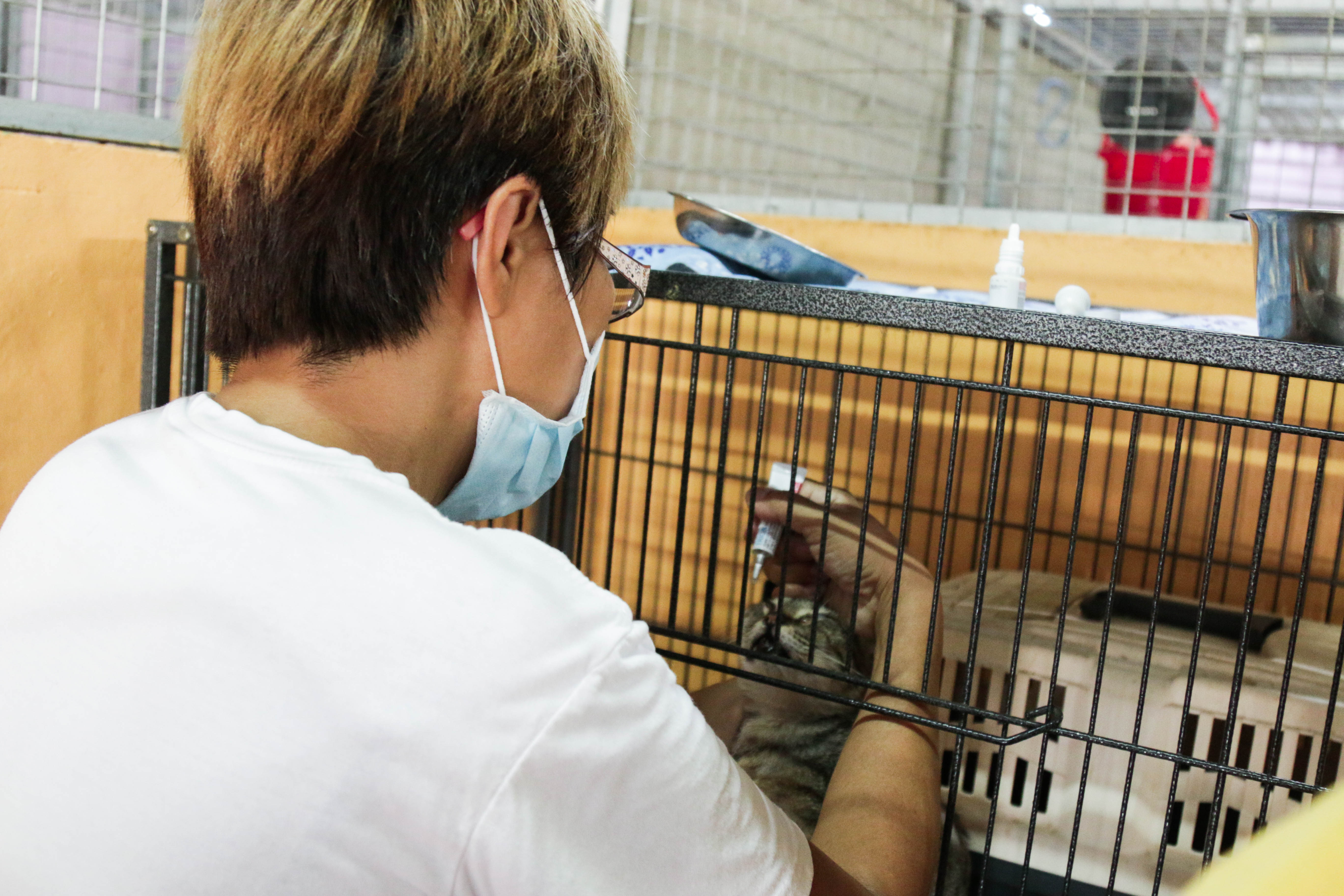 Applying eyedrops. Photo by Rachel Ng.
Applying eyedrops. Photo by Rachel Ng.
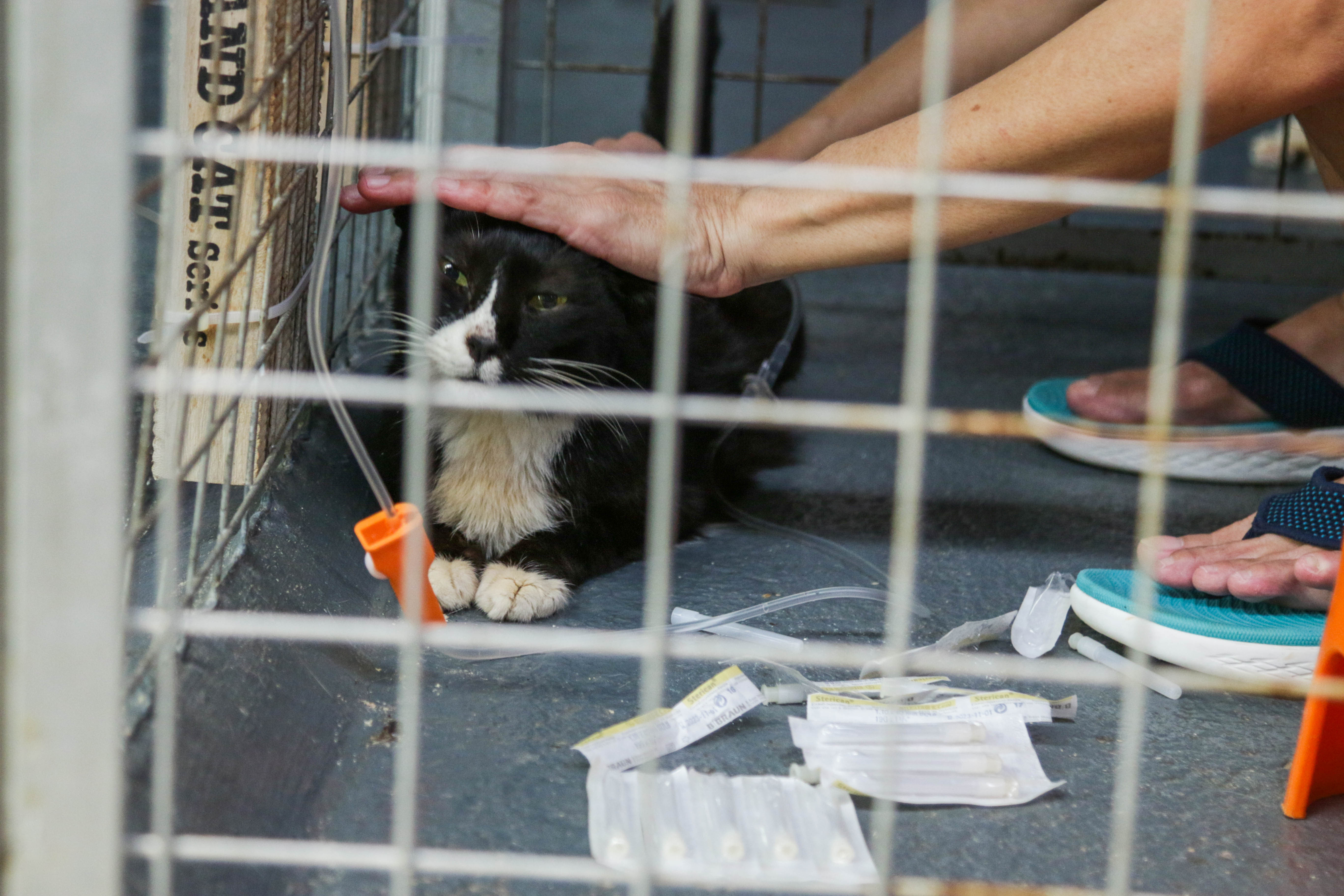 Cat getting its subcut administered. Photo by Rachel Ng.
Cat getting its subcut administered. Photo by Rachel Ng.
"So I will ask my team, 'Eh, this one eat already or not?! That one eat already or not?!' Then I will feed, and I will check check check check check. I also have to do subcuts*, which is giving fluids to some cats that have kidney issues. We have a lot of cats with kidney issues, which means they have to do water therapy every day — we have to use a needle to poke into the cat's skin and let the water run.
This cat (pictured above), he needs to be on long-term medicine and subcuts. So we need to give him fluids everyday. We need to monitor him very closely, because he is a feline immunodeficiency virus (FIV) and feline leukaemia virus (FeLV) positive cat. And he is a kidney issue cat. So we have to monitor his intake."
*"subcuts" is short for subcutaneous (SQ) fluid administration (seen in the picture above) that provides additional fluids to cats and helps them to manage and prevent dehydration.
 Milk for the cats. Photo by Angela Lim.
Milk for the cats. Photo by Angela Lim.
 Milk time. Photo by Rachel Ng.
Milk time. Photo by Rachel Ng.
"Down here, if you don't drive, cannot one. No Grab will come in. And if you use your own bike to cycle in, the next day it will disappear. People will steal one. A lot of bicycles have been stolen from here already."
 "This is my scratch post. And mine only." Photo by Rachel Ng.
"This is my scratch post. And mine only." Photo by Rachel Ng.
"Spotty (not pictured), for instance, he's about 14 years old. You see, he looks great right? He's been with me for two years. Somebody threw him down from a high floor. That's why he's walking around with his hind legs and limping, but luckily he didn't have much damage. He's dragging his legs a bit."
 Just hangin'. Photo by Rachel Ng.
Just hangin'. Photo by Rachel Ng.
The cattery sustains itself on boarding fees paid for by people who rent spaces to house the cats they rescue. She charges them a lower-than-usual rate, because most rescuers who come to her are friends or acquaintances.
"We just have so many rescuer friends, so our charges try to be as low as possible. Every month, they have to pay a boarding fee. If they don't pay the boarding fee for even a month, there is a possibility that we have to close shop.
We are not an organisation, we are just a boarding centre. Most rescuers, when they send their cats here, they can only afford to pay you the boarding fee, but they cannot afford the vet fees. But (when the cat is sick), I cannot see the cat like 'ugh' (looking uncomfortable/sick) and not do anything right?"
 Photo by Rachel Ng.
Photo by Rachel Ng.
 "PET ME PLEASE." Photo by Rachel Ng.
"PET ME PLEASE." Photo by Rachel Ng.
"Actually, behind the scenes, a lot of individuals do a lot, a lot, a lot, a lot of things. Many of them are coming up with their own money to save (the cats). It is never cheap. It is very expensive. For example, I just sent one cat (to the vet) — six days, and it's already S$600 to S$700.
Rescuers' lives are damn difficult. It's a never-ending job. People always ask me, 'Why can't you just take this cat?' How am I supposed to 'just take'?! After a while it'll all be filled up!"
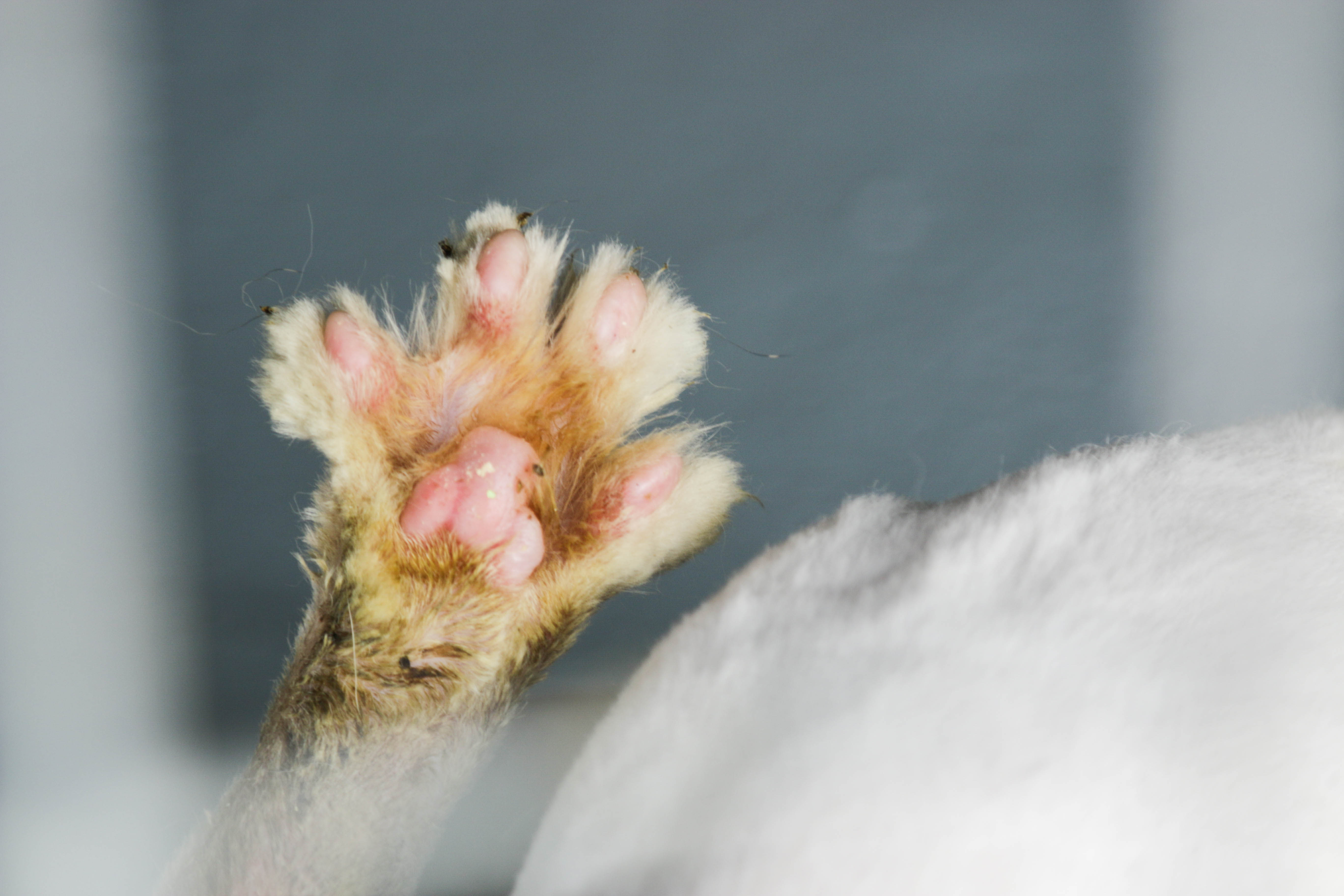 The paw of a cat that was down with diarrhoea, and had to have its fur shaved. Photo by Angela Lim.
The paw of a cat that was down with diarrhoea, and had to have its fur shaved. Photo by Angela Lim.
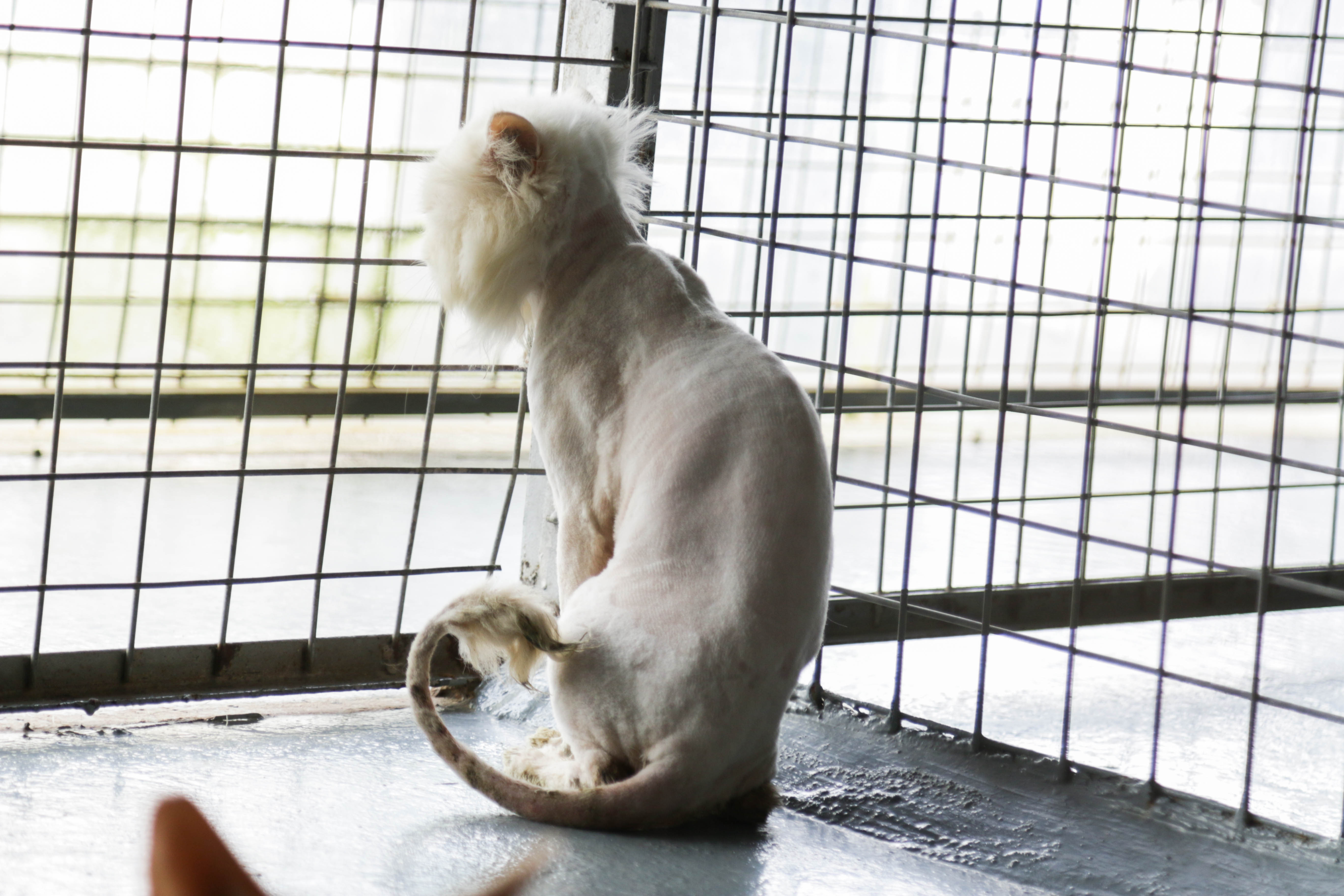 "I am very sad because I cannot stop pooping and now I am naked." Photo by Angela Lim.
"I am very sad because I cannot stop pooping and now I am naked." Photo by Angela Lim.
"Now I find that due to social media, you can post when the cats are injured and that you need funds. Nowadays, people can donate, and you can quite easily raise the funds.
Previously, it was very difficult. Last time, the aunties, they have to fork out the full fee to send them to sterilisation, then (pay for) transport, then hospitalise the cat. They all used their own money until CWS (Cat Welfare Society) came and said they have a plan and subsidised half of all these. Things got better.
After many years, then many other clinics have this programme — the TNR (Trap-Neuter-Release-Manage) programme. I find that it helps a lot because you really don't see so many pregnant cats around. It's much better controlled as compared to a long time ago when you'd see a lot of pregnant cats around on the street."
 "This is Max!" He's one of Soh's favourite cats. Photo by Rachel Ng.
"This is Max!" He's one of Soh's favourite cats. Photo by Rachel Ng.
 Photo by Rachel Ng.
Photo by Rachel Ng.
"My friend was walking her dog at 2am when she saw two guys who parked their van near the power station. Then, they (disposed of) a sofa there. She was wondering why they threw the sofa there, and put it in this strange 'L' shape. So they actually released three cats, and put them inside the sofa. The three Siamese cats were so frightened and hiding in a corner. They thought that if they put it in this 'L' shape, the cats won't jump out and run away."
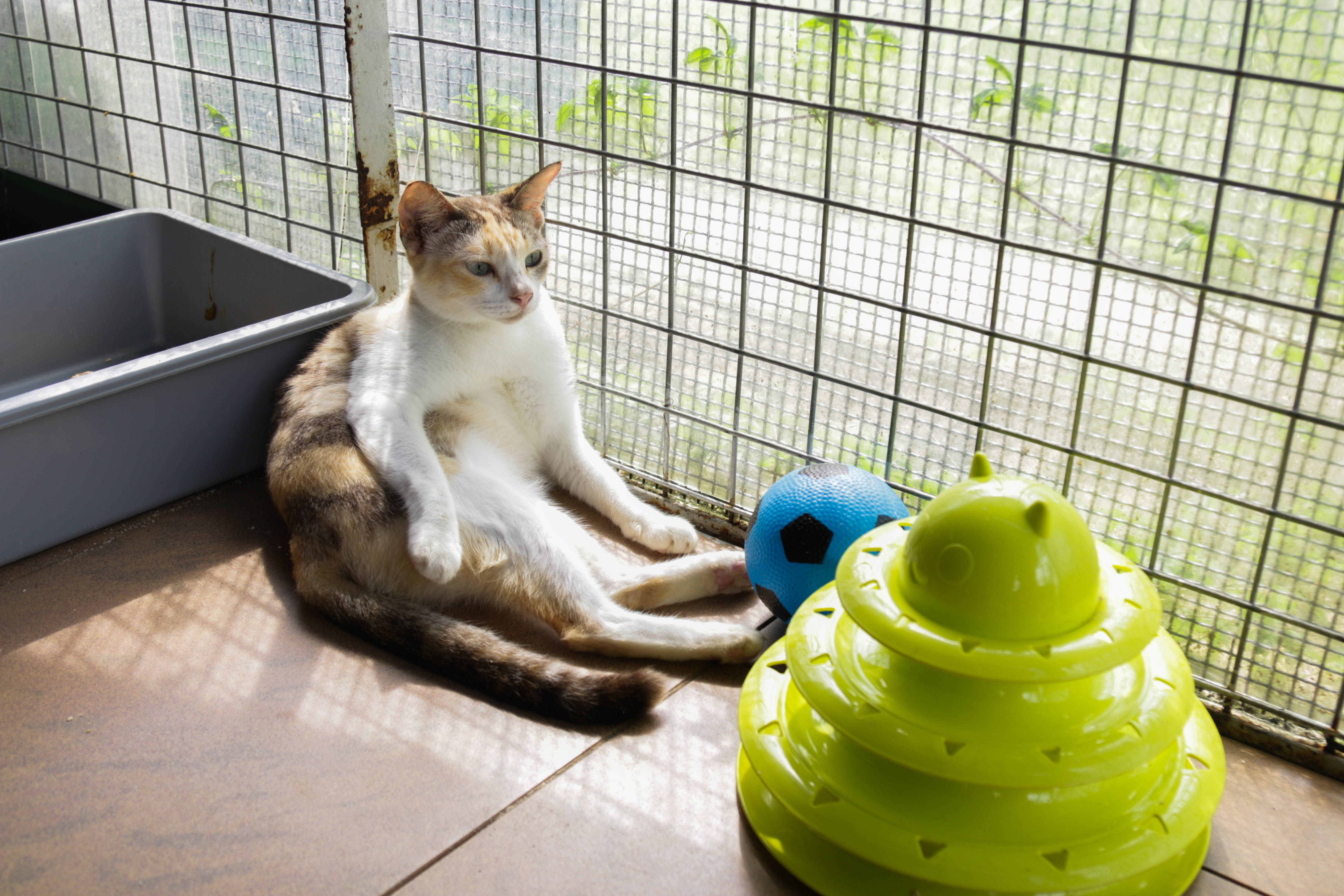 "This is comfortable." Photo by Rachel Ng.
"This is comfortable." Photo by Rachel Ng.
 Dayne (right) from Purely Adoptions helps her facilitate adoption processes. Photo by Rachel Ng.
Dayne (right) from Purely Adoptions helps her facilitate adoption processes. Photo by Rachel Ng.
She was incensed when she learned about the Parliamentary debate regarding cat feeders who allegedly aggravate rat infestations because they leave food around in the neighbourhood.
"There are some feeders, when they feed, they do not clear. But majority of the feeders, they definitely will clear (the food). They are responsible.
We have so many cats to feed, of course I cannot just wait for this one (cat) to finish. So maybe, I will leave leave leave leave, then come back again. Then I will clear. That's why there's a two-hour feeding time. But some, they will just throw (away immediately)."
 Sayang time. Photo by Rachel Ng.
Sayang time. Photo by Rachel Ng.
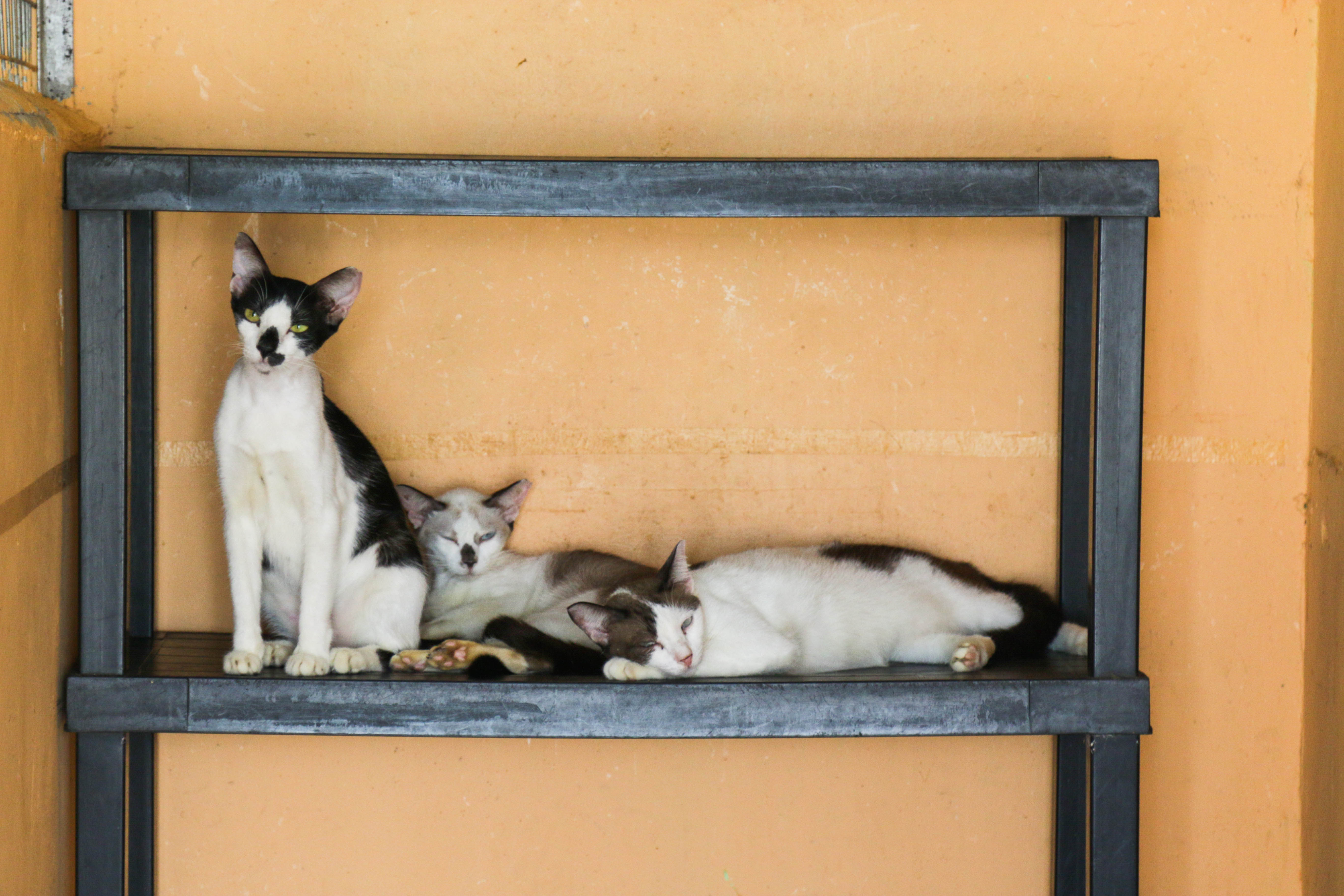 Afternoon nap. Photo by Rachel Ng.
Afternoon nap. Photo by Rachel Ng.
But what surprises us most is that her motivation for doing all of this is not an overflowing love or passion for cats — she's more inspired by something a certain Taiwanese singer said.
"Actually, I really like what Jam Hsiao once said. He said: 'I don't particularly love (animals), but they are just a group that particularly needs more taking care of.'
And I think they really need to be taken care of. Because they are a group that can slip the minds of society easily. So I think this quote really embodies why I continue to do what I do. They really need our help."
Top photos by Rachel Ng
If you like what you read, follow us on Facebook, Instagram, Twitter and Telegram to get the latest updates.
